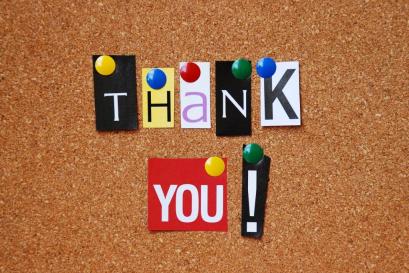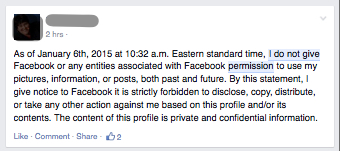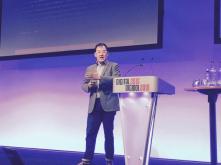
A strange thing just happened……………….
That’s a good opening line, straight out of “50 Great Opening Lines For Your Blog”.
Anyway, a strange thing did just happen. I started to write this blog and came across one written by Ian Anderson Gray entitled:-
Stop Saying Thank You on Social Media & Say Something Meaningful!
He had based this on a similar blog by Mark Schaefer who is probably the Social and Marketing expert I respect more than any other. However, on this subject I have to disagree with the great man.
Saying “Thank You” is easy, just two little words that take but a second to say and type but to the recipient can make all the difference.
I always say it has never been easier to provide gold-standard customer service using Social communication. Conversely you could argue it has never been easier to get it wrong, and business and organisations do, time and time again.
Part of a successful customer service strategy is some appreciation when a customer or stakeholder does something which benefits you as the service provider. One of the great parts of Social Marketing is the ability to turn customers, clients and supporters into “Brand Ambassadors”. Those people who will fly the flag for you on the Social web, extol your qualities and if you’ve really built a solid relationship with them, defend you when you’ve received negativity.
Think of saying “thank you” as a deposit into your “Goodwill” account. Each time you are appreciative of an act of Social interaction and engagement the account grows richer. The benefit here is that when you need to deal with a troublesome situation you can withdraw from this “Goodwill” account and hopefully resolve it to everyone’s satisfaction.
According to a 2014 study published in the “Emotion” publication thanking a new acquaintance makes them more likely to seek an ongoing relationship. Isn’t that the whole premise of Social communication? To develop strong and long-lasting, mutually beneficial relationships.
When I was managing a team of people in the radio business I tried to pass some of the customer service practices I had developed. One of these was taking time at the end of the day to respond to anyone who had engaged with me during the day if I hadn’t the chance to already do so. It took a matter of minutes but it kept the “Goodwill” account topped up. In my case it helped me become the most listened to commercial radio presenter in Wales for the best part of a decade.
Of course “Thank You” can be just that, two little words said in appreciation of an act or comment. It can also be more than that:
A positive comment on a blog
A comment or a share on another Social platform
An endorsement of your expertise on LinkedIn
A testimonial for your website or YouTube channel
A review of a product or service
And so it goes………..
I thoroughly recommend an excellent on this subject. It’s “The Thank You Economy” by Gary Vaynerchuck. It describes how social media has changed the way we do business and how consumers want to be appreciated for their business. By expressing your gratitude towards them online publicly shows that you do care.
It’s well worth a read.
And er….by the way……thank you for reading.















